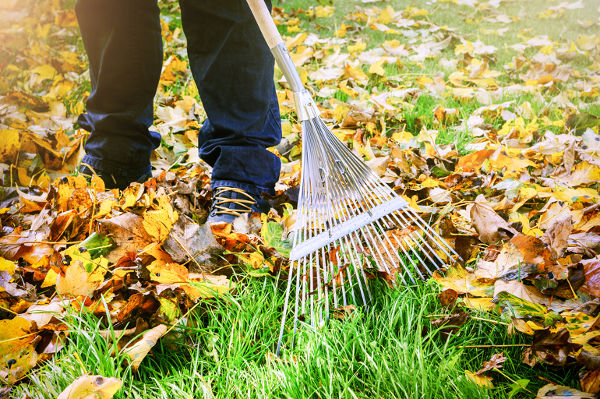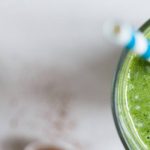
By symbiot/ Shutterstock
Garbage, and especially food garbage ends up in huge piles. A lot of developed countries are already working on proper recycling of food waste, but the individual consumer can help as well.
Recycling food can be beneficial for others and yourself.
Table of Contents
What happens to food waste?
According to Fareshare “1.9 million tonnes of food is wasted by the food industry every year in the UK”. This happens at the supply stage at the end of each day. Restaurants throw away prepared food which was not ordered as well as individual ingredients. Shops throw away fruits and vegetables which were not bought and don’t look appealing.
A great deal of fruits and vegetables are rejected by shops for purely for cosmetic reasons such as shape, size or colour. In that case the production doesn’t even leave the farm it was cultivated in, but instead gets thrown away. In countries where garbage is recycled, food waste is gathered in huge landfills, where it’s later covered with a thin layer of soil, and left to become natural compost.
However, this in itself is a problem as well. Unfortunately, these landfills become a serious environmental problem. The lowest levels of the landfills contain no oxygen. As the food rots, it gets eaten by anaerobic micro organism which release methane. This gas has a strong negative impact on global warming. In the landfills without recycled materials, there are also plastics, glass, metals and other elements that require a long time to deteriorate.
Check out our infographic on how to reduce food waste:

Benefits of food waste recycling
Recycling your own food leftovers, or simply said – composting, instead of simply throwing them in the rubbish bin has a long list of benefits for you, your community and the environment.
- Recycling reduces the volume of the periodically collected garbage, and in turn, the amount of garbage in the landfills. It directly contributes to lowering the methane emissions.
- It might earn you money if you have someone to buy the end product of your compost.
- Or, if you work on a garden, it saves you money from purchasing soil and commercially made fertilisers.
- If you use it on your own vegetable garden, it also saves you money from buying less food.
- Saves the food industry energy and resources, and same goes for the garbage collecting industry.
- Improves your garden’s health.
- Reduces water use in your garden.
What food waste can be recycled?
For the making of compost, you better know about a few things you shouldn’t be putting in your mixture, as not everything on the table is OK.
You can add:
- meat, even raw is ok;
- fruit;
- vegetable;
- dairy products;
- rice;
- beans;
- Eggshells;
- Anything made of wheat;
- Animal bedding sawdust;
- Plant and flower materials (as long as they’re not diseased);
- Tea and coffee products;
- Soft paper products.
You shouldn’t add:
- Plastic products, even biodegradable ones;
- Wooden products (they degrade very slowly);
- Dog or cat litter;
- Cardboard products;
- Medicine;
- Non-compostable starch liners;
- Liquids, oils and fat.
How to recycle food waste at home
- Get a food caddy. A food caddy is a kitchen container with a 5-litre capacity. You use it only for food scraps and ingredients for your compost.
- Line the food caddy with compostable starch liner. A compostable starch liner is a garbage bag made especially for composting.
- Fill the kitchen food caddy. Make sure all the allowed food waste from your household finds its way in there.
- Extract the starch liner and place in the garden. Once the caddy is full, get it outside.
- Separate the types of waste. Once you have enough waste to work on, separate the different types and be ready to organise on flat earth in the garden.
- Organise your materials in layers. Lay twigs and straw first, and then alternate each upper layer with moist and dry. For example, the moist ingredients over the twigs should be stuff like food scraps, seaweed, tea bags. Over them, you should have dry materials like leaves, straw, pellets.
- Add manure. This is optional, and is only used to speed up the composting process. But you can skip it if you’d like.
- Sprinkle with water from a hose.
- Cover with wood scraps.
- Turn with a shovel every few weeks. We do this in order to let oxygen get in the deepest layers, so it doesn’t start emitting methane like in the landfills.
You can add more waste as you go. Adding and periodically turning the compost, until everything has turned into a homogeneous mixture.
How to reduce the amount of food waste on your table
If you’d like to reduce our food waste to the bare minimum, here are a few other things you can do.
- Plan your meals for the following week and buy only the products you know you are going to eat for sure.
- Be in touch with everything you have in your kitchen in order to avoid buying products you already have.
- Buy only what you need.
- Buy in bulk only products that don’t spoil over time – like toilet paper, spices, honey.
- Research which fruits last longer in a refrigerator and which last longer outside, in order to keep them unspoiled for longer.
- Wash fruits and berries only when you’re about to eat them. Otherwise, the high sugar they contain would attract mould in no time.
- When you get home from the store, take the time to wash, dry, chop, dice, slice, and place your fresh food items in clear storage containers.
- Freeze bread, sliced fruit, or meat if you won’t be able to eat it in time.
Can I reuse old compost?
Reusing old compost seems logical and in many cases, it’s a good idea to do it. However, first you need to insure there are no signs of disease or pests in last year’s plants. If the compost has dried out to the point that it can’t be evenly rehydrated, it’s better to be discarded.
If these problems aren’t present, you can reuse the compost, though it would be a good idea to enrich it a little with food and healthy plant matter.
For specific guidelines on plants with high nutrient requirements check out the plant in question on the internet or ask a local gardener for advice.
Need a Gardener?
Enter your postcode to view our rates and availability in your area.
For questions about the services we offer visit our main site or you can always call us at 020 3404 4881




Fantastic Blog !! I came across your blog, and there I found information about How to Recycle Food Waste at Home. You have written here excellent information. Thanks for sharing this useful information.
Glad you like it!
Very useful.
3xcell3nt sruff. Thank you for the breakdown. I am newly into the game of green home so I really want ti get this right. Thank you again.
Thanks for sharing! This was really insightful 🙂
Responsible food waste recycling is vital in reducing environmental impact. Restaurants and shops often discard unsold produce, contributing to the 1.9 million tonnes wasted annually in the UK. Composting at home helps combat this issue, benefiting your garden and community. Utilize a food caddy and compostable starch liners to collect food scraps. Layer materials in the compost pile, alternating moist and dry ingredients, then turn with a shovel regularly to ensure efficient decomposition. Join the effort to minimize food waste and create eco-friendly compost!